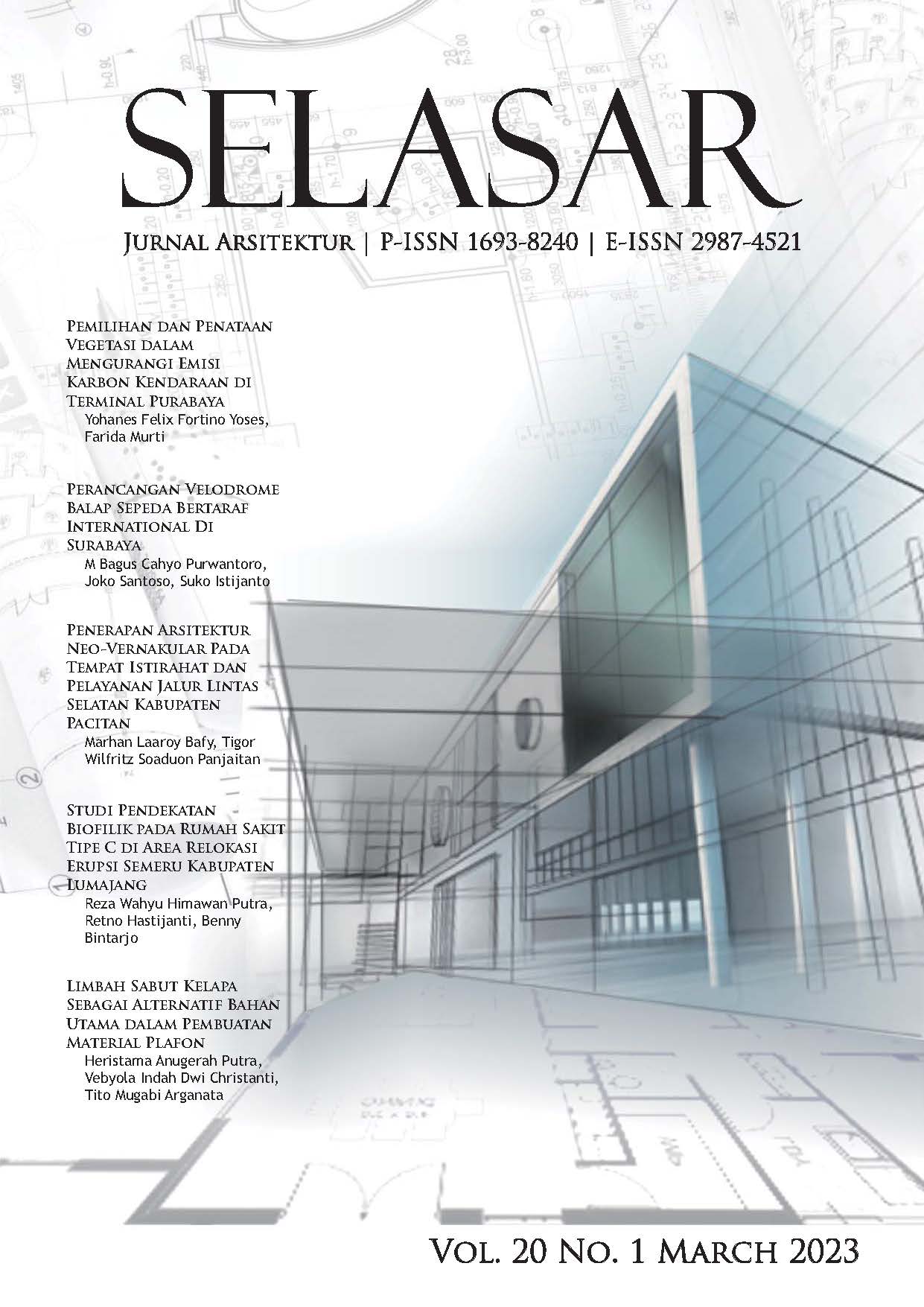Limbah Sabut Kelapa Sebagai Alternatif Bahan Utama dalam Pembuatan Material Plafon
DOI:
https://doi.org/10.30996/selasar.v20i1.8835Keywords:
Coconut coir, Waste, Gypsum, Materials, CeilingAbstract
The increasing needs of life in a city make the demand for housing in the form of housing among the lower middle class people increase. The use of building materials is no exception. Indonesia is in a tropical area with a good climate for flora where there are abundant natural resources. Natural resources in the form of commodity coconuts are one that is abundant with natural conditions in Indonesia. Coconut water and fruit have enormous benefits for the human body, apart from that coconut coir is one of the large amounts of production waste that is needed every day. The waste from coconuts that is most widely used is part of the coconut coir, which functions as a raw material for the process of burning and making charcoal. Currently, coconut coir waste is mostly used as raw material for the home appliance and craft industries on an environmentally friendly basis, but this processing has not been carried out thoroughly. The method used in this research is by conducting measuring experiments to get the results of the mixing ratio of materials between coconut coir and the appropriate adhesive cement. The results of this study aim to develop a ratio of coconut coir waste as a mixture with a value of 1:1.5.










